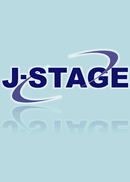All issues

Volume 2003 (2003)
- Issue Supplement113 P・・・
- Issue Supplement112 P・・・
- Issue Supplement111 P・・・
- Issue Supplement110 P・・・
Volume 2003, Issue Supplement110
Displaying 1-1 of 1 articles from this issue
- |<
- <
- 1
- >
- >|
-
Makoto Kawamoto, Michio Isono, Kiyotaka Murata, Kei Saito, Hiroaki Miy ...2003 Volume 2003 Issue Supplement110 Pages 1-18
Published: March 01, 2003
Released on J-STAGE: November 27, 2012
JOURNAL FREE ACCESSHouse and Brackmann's grading system, Fisch's grading system and Yanagihara's 40-points method are widely used for the testing of the severity of facial paralysis. These methods are very convenient and simple, requiring no sophisticated instruments. Since these evaluations depend on the subjective judgment of the examiners, objectivity and reproducibility have always been the problem with these methods.
To address this problem, the movement of markers attached to a subject's face was measured with a video camera and a personal computer suitable for daily clinical practice. This method was useful for evaluating facial nerve paralysis quantitatively and objectively.
A new analysis system using a computer with an infrared camera allowed more detailed numerical evaluation of the velocity of facial movement. In the improvement process of paralysis, the differences between the right and the left side disappeared first in the movement distance and then in the velocity. When comparing the improvement course of paralysis in the orbicularis oculi area and the oris area, the orbicularis oculi area showed gradual uniform improvement corresponding to improvement in the 40points method, while the orbicularis oris area showed gradual initial improvement, followed by rapid improvement in many cases.
The infrared camera system shortens analysis time, but the cost is rather high. This method is useful for the evaluation of the reliability in scoring methods, objectively detailed evaluation of the mechanism of the movements of the facial expression muscles, and feedback of the analysis results for use in conventional scoring methods.View full abstractDownload PDF (4663K)
- |<
- <
- 1
- >
- >|